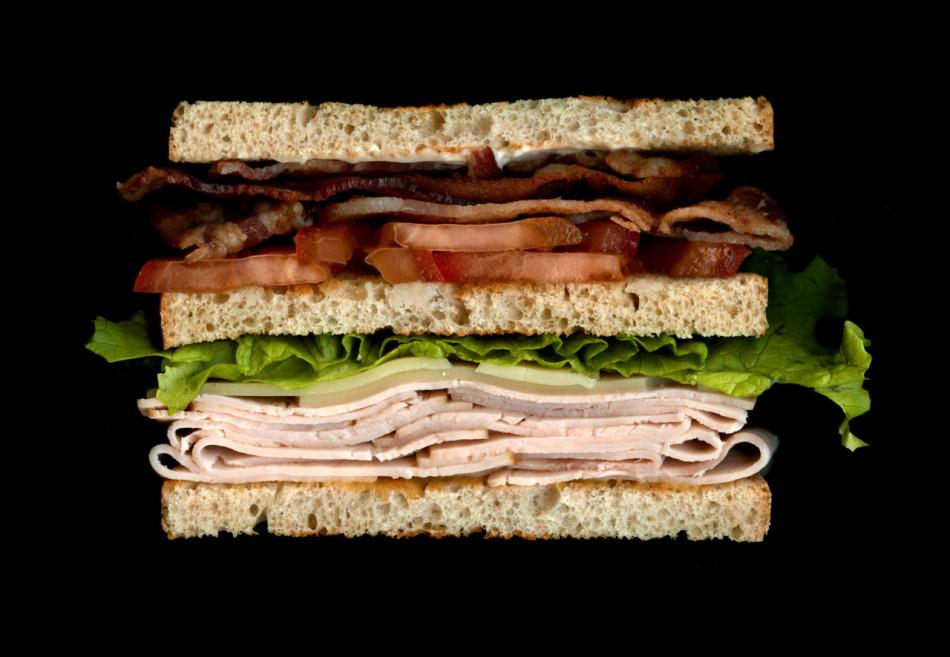In defense of my obsession with sandwiches
I like sandwiches, to put it mildly. I’m pretty vocal about it, too. A while back I wrote about Scanwiches, a website featuring high-resolution scans of both homemade and store-bought sandwiches. Last year I made Lightly Toasted, a film about sandwiches so good they induce hallucinations. I click those pop-up ads about hot Russian sandwiches near you—oh, those aren’t sandwiches? Never mind. Still, in my opinion, the greatest thing since sliced bread happened right after the invention of sliced bread, when someone figured out how to put things between slices.
It turns out that sandwiches were actually around before sliced bread. Much like a good sandwich, the history of the food is long and has many layers. The concept of a sandwich has been around for thousands of years in several cultures. I mean, it’s not that hard to put meat on bread. The Jewish religious leader Hillel the Elder is said to have wrapped lamb and herbs in matzah bread during the Passover holiday, sometime around the birth of Christ. If this is true, he basically just made shawarma.
The term “sandwich” itself, though, was coined in the 18th century by the aristocrat John Montagu, the 4th Earl of Sandwich. The more popular story is that Montagu was an avid card player and that he ordered his meat served between two loaves of bread so that he could eat with one hand and keep playing with the other. His friends then started ordering “the same as Sandwich,” and the name stuck. The Earl’s biographer, however, believes that his busy work schedule prompted him to find a way to eat at his desk. Either way, the sandwich was created for convenience, by people who wanted to get more food into their faces with less effort. That’s pretty beautiful.
However, the sandwich world isn’t all fun and games. There are plenty of bad sandwiches out there, and a bad sandwich is dead to me. I know that I shouldn’t be a snob about a meal created for laziness, but I can’t help it. And simplicity isn’t the problem—there’s a special place in my heart for basic sandwich staples like the BLT, the PBJ and the grilled cheese. But the gray, soggy, triangular abominations that plague supermarkets worldwide are a disgrace to sandwich-kind. That is, if you can even call them sandwiches.
Unfortunately, my real beef with poor sandwich standards is much closer to home. Let’s be honest: Brazil needs to step up its sandwich game. I love Brazilian cuisine, but its sandwich department is nothing special. The signature bauru is underwhelming, and the X-burger has a colorful name but a bland taste. I admit there are some hidden gems, like the world-famous mortadella sandwiches at the Mercado Municipal. And there’s been some progress lately with the creation of Sandwich Week in São Paulo, a biannual event featuring the best of the city’s sandwichery. For the most part, though, Brazil is lacking between the loaves.
I take this issue very seriously because I have respect for sandwiches. I respect what a sandwich represents. A sandwich is a gastronomical mixtape, a horoscope, a mantra. Each ingredient tells something about the person who made it and the person who ate it. More importantly, a sandwich stands for equality. From a dainty English cucumber sandwich, to the crunch of a Louisiana Po Boy, from a 3 a.m. smorgasbord to a gourmet roll, it’s all the same food. Each sandwich is undeniably unique, but united by the essence of sandwichness. Anything can be in a sandwich; the possibilities are endless. There’s a little bit of sandwich inside all of us. Sandwiches are love. Life. The universe. The whole enchilada.
Sources: whatscookingamerica.net, scanwiches.com, vejasp.abril.com.br

Adam is an Editor-in-Chief of The Talon. Before that he was the Features Editor, and before that he was the Assistant Features Editor. Before that, he...










Sandy • Mar 25, 2014 at 6:55 pm
Best sandwich EVA…
http://acozykitchen.com/spanglish-sandwich/
Ange • Mar 24, 2014 at 2:46 pm
I am so hungry right now.
I need an Attman’s.
http://www.attmansdeli.com/
Ange • Mar 24, 2014 at 2:48 pm
Just in case the link wasn’t clear enough. I mean this: http://www.seriouseats.com/images/20110801-Attmans-deli-baltimore1.jpg